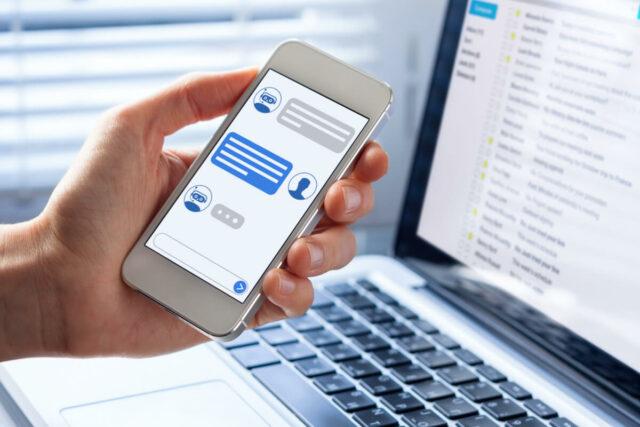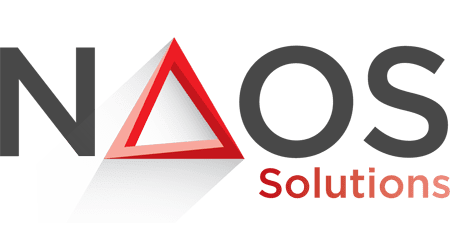In 2024, an outbound sales strategy remains a cornerstone for driving growth and fostering lasting customer relationships: it is like sending out a fleet of ships to explore new territories. But not at random! Understanding and implementing an effective outbound sales strategy can mean the difference between success (gaining new market shares) and stagnation for companies.

Let’s delve into the vital role of outbound sales strategy in business success and explore some recent trends in 2024 that will impact business growth.
THE IMPORTANCE OF OUTBOUND SALES STRATEGY
An outbound sales strategy refers to a company’s tactics and methods to reach out and connect with potential customers. It allows businesses to take control of their sales journey, targeting specific markets or demographics. This mix of techniques includes cold calls, emails, social media engagement, and face-to-face meetings designed to spark interest and start conversations.
Where It Fits in Your Sales Toolbox
Outbound sales strategy is one piece of the larger sales puzzle. While inbound strategies wait for customers to come knocking, outbound strategies boldly knock on customers’ doors. It’s proactive, like a chess player making the first move, and it complements inbound tactics by actively seeking out new opportunities and customer engagements.
It’s essential to distinguish between outbound sales strategies in B2B (Business-to-Business) and B2C (Business-to-Consumer) settings. B2B outbound sales are like marathons requiring patience and strategy, often involving longer sales cycles, relationship building, and a focus on addressing specific business needs. On the other hand, B2C outbound sales are typically more like a series of speed races. They are product-focused, with shorter sales cycles and a stronger emphasis on emotional appeal and brand identity. Professionals must constantly learn new tricks to stay atop their game.
Standing out amidst a sea of competitors is exceptionally hard: it’s not just about what you sell but how you sell it. You need to be innovative, understand your value propositions, and communicate them in a way that resonates with your audience. More than ever, successful outbound sales strategies depend on a company’s ability to adapt to market changes, embrace new technologies, and anticipate shifts in consumer behavior.
EMBRACING THE FUTURE: KEY OUTBOUND SALES STRATEGIES FOR 2024
Integrating AI And Automation In Sales Processes
Artificial intelligence (AI) and automation have become business game-changers specifically relevant for Outbound Sales. These technologies reshape the way sales professionals engage with and understand their customers.
AI and automation extend beyond just customer-facing chatbots, offering tools that empower sales teams in various ways. One significant application is AI-driven predictive analytics. This technology analyzes vast amounts of data to identify sales trends, forecast customer behavior, and pinpoint potential leads with higher accuracy. Sales teams can use these insights to tailor their strategies, focus on the most promising prospects, and optimize their efforts for better results.

Another innovative application is automated lead scoring. By leveraging AI algorithms, businesses can automatically rank leads based on their conversion likelihood, enabling sales professionals to prioritize their outreach efforts more effectively. This streamlines the sales process and ensures you invest time and resources in leads with the highest potential.
Example: Database Building
Artificial Intelligence (AI) is changing how businesses build their prospect databases. Some companies, such as SynthMind.app, offer a service that helps you find accurate contact information for potential clients. They scour the internet and professional databases to identify contacts and companies that match your buyer profile. All you need to do is chat with the tool, which will provide you with a list of people to contact.
Personalization At Scale
One of the standout features of AI in outbound sales is its ability to facilitate personalized interactions at scale. Machine learning algorithms analyze vast customer data, allowing businesses to tailor their messaging and offers to individual preferences. This level of personalization increases the chances of conversion and enhances the overall customer experience.
Example: Dynamic Content Generation
AI-powered tools can dynamically generate personalized content based on customer profiles and preferences. Whether through email campaigns or targeted advertisements, businesses can deliver content that resonates with each customer, fostering a stronger connection and engagement.
AI-based solutions like CrystalKnows can assist salespeople in identifying the personality type of their contacts. It also provides valuable tips on adjusting their sales pitch, handling sales objections, and presenting pricing offers in a way that resonates with them. In a B2B context, this significantly improves their chances of closing a deal.

Data-Driven Decision Making
AI analyzes vast datasets to provide actionable insights for decision-making. This data-driven approach helps sales teams refine strategies, optimize campaign performance, and adapt to changing market dynamics. By leveraging AI-driven analytics, businesses gain a competitive edge through informed decision-making.
Example: Sales Forecasting
AI algorithms can analyze historical sales data, market trends, and other relevant factors to generate accurate sales forecasts. This empowers businesses to make informed decisions regarding resource allocation, inventory management, and overall sales strategy.
CHALLENGES AND SOLUTIONS IN OUTBOUND SALES
Strategies For Balancing Outbound Sales Tactics With Customer Privacy Concerns
In the era of heightened data privacy awareness, finding a delicate balance between effective outbound sales tactics and respecting customer privacy is paramount. Building trust with your audience requires thoughtful strategies that drive results and ensure customer data is handled responsibly.
By integrating these strategies into your outbound sales approach, you can foster a customer-centric environment compliant with privacy concerns and build trust and loyalty. This balance ensures that your outbound sales tactics are effective and aligned with today’s consumers’ ethical expectations.
Here are 10 key strategies and solutions for Customer Privacy Concerns:
- Explicit Consent and Transparency
- Communicate the purpose of collecting customer data and seek explicit consent before initiating any outbound sales communication.
- Provide a transparent and easily accessible privacy policy that outlines how customer data will be used, stored, and protected.
- Preference Management
- Implement preference centers that allow customers to control the frequency and nature of outbound communications.
- Enable customers to opt in or out of specific channels, ensuring their preferences are respected.
- Data Minimization
- Only collect and use data that is essential for the outbound sales process. Avoid unnecessary information that may raise privacy concerns.
- Regularly review and update data to ensure accuracy and relevance, minimizing the risk of holding outdated or unnecessary information.
- Secure Data Handling
- Invest in robust data security measures to safeguard customer information. This includes encryption, secure storage, and regular security audits.
- Educate your team on best data handling practices and ensure they understand the importance of protecting customer privacy.
- Personalization without Intrusion
- Utilize customer data for personalization, but do so in a way that enhances the customer experience without being intrusive.
- Tailor communications based on relevant information, avoiding using sensitive or overly personal data without explicit consent.
- Regular Compliance Audits
- Stay abreast of evolving data protection regulations and conduct regular audits to ensure compliance.
- Train your team on the latest privacy regulations and establish clear protocols for handling customer data by these laws.
- Customer Education
- Educate customers about the value of providing certain information and how it enhances their experience.
- Clearly articulate the benefits they can expect in return for sharing specific data, fostering a sense of transparency and mutual benefit.
- Proactive Data Breach Response
- Develop a comprehensive response plan in the event of a data breach. Communicate openly and promptly with affected customers, regulators, and the public.
- Demonstrate a commitment to resolving the issue and preventing future breaches, building trust through transparency.
- Consistent Communication
- Maintain open lines of communication with customers about their data and privacy. Regularly update them on your privacy policies and any changes.
- Encourage customers to reach out with privacy concerns or questions and provide clear channels for them to do so.
- Ethical Use of Technology
-
- Ensure that any technology or tools used for outbound sales align with ethical standards and legal requirements.
- Regularly assess the ethical implications of your technology stack and be prepared to make adjustments as needed.
Maintaining High-Quality Standards And Consistency In Customer Communication Across Multiple Channels
In the dynamic world of sales, maintaining high-quality standards and consistency in customer communication across multiple channels isn’t just beneficial – it’s essential. This challenge, if not addressed, can significantly impact the effectiveness of your sales efforts.

To seamlessly integrate these high standards into your outbound sales strategy, consider the following tips:
- Unified Messaging for Outbound Success
In outbound sales, consistency is critical. Whether you’re reaching out via email, phone, or social media, ensure that your brand voice and messaging are cohesive. This unified approach helps build a reliable and trustworthy image, making it easier for potential customers to engage with and remember your brand.
- Responsive Customer Support: A Sales Catalyst
Quick and effective responses aren’t just for customer service; they’re vital in outbound sales, too. When you reach out to potential clients, be prepared to address their queries and concerns promptly. This responsiveness showcases your commitment to customer needs and can significantly accelerate the sales process.
- Consistent Branding Across All TouchPoints
Your branding elements – logos, colors, visual styles – should be consistent throughout your outbound communication. This consistency reinforces brand recognition, making your company more memorable and trustworthy in the eyes of potential clients.
- Proactive Communication: Anticipating Needs
Proactively provide potential customers with information that could help them make informed decisions. Encourage feedback to refine your communication strategy continually. For instance, Airbnb’s proactive approach in informing hosts and guests about relevant local events or safety measures can be mirrored in how you provide timely, helpful information to your prospects.
Adapting To Changing Consumer Expectations And Needs
The difficulties in outbound sales stem from the constantly changing expectations of consumers. The key challenge is identifying these changes and finding reliable sources for insights. Here are some winning methodologies to align your outbound sales strategies with the evolving consumer landscape.
- Active Market Research: The Pulse of Change
Stay ahead by conducting regular market research. Use surveys, focus groups, and feedback forms to gather direct input from your target demographic. This first-hand information is invaluable in understanding consumer sentiments and predicting trends.
- Social Media Listening: The Modern Crystal Ball
Social media platforms are treasure troves of consumer insights. Utilize social listening tools to monitor conversations, trends, and opinions related to your industry. These real-time insights can alert you to shifting attitudes and expectations, enabling you to adjust your strategies promptly.

- Competitor Analysis: Learning from Others
Keep an eye on your competitors. Observing how they adapt to market changes can provide clues about consumer preferences. Use tools like competitor analysis software to track their offerings, marketing campaigns, and customer feedback, which can offer valuable lessons and foresight.
- Industry Reports and Analytics: Beyond the Surface
Leverage industry reports and analytics for a deeper understanding of market trends. These resources often provide comprehensive data on consumer behavior, emerging patterns, and future forecasts. Regularly reviewing this information can help you anticipate changes in consumer needs.
One of our favorites for B2C Trends is Euromonitor International, which identifies the most significant trends in consumer behaviors yearly. Here is their 2024 report.
- Sales Team Feedback: The Frontline Insights
Your sales team interacts with customers daily, making them a rich (if not the best) source of information. Encourage them to share insights and observations from their interactions. This frontline intelligence is crucial in understanding immediate customer responses and adjusting tactics accordingly.
- Continuous Training and Development
Invest in regular training for your sales team, focusing on adaptability and trend awareness. Equip them with the latest knowledge and tools to effectively understand and respond to changing consumer behaviors.
- Utilizing CRM Tools for Behavioral Insights
Your CRM (Customer Relationship Management) system can be a goldmine of customer preferences and behavior information. Analyze customer data to identify patterns and shifts in their purchasing journey, which can inform more tailored and responsive outbound strategies.

By incorporating these methodologies into your outbound sales approach, you can create a dynamic strategy that responds to and anticipates consumer needs and expectations, keeping you one step ahead in the competitive market.
THE FUTURE IS HERE: ADOPTING NEXT-GEN OUTBOUND SALES STRATEGIES
As we look ahead to 2024, it’s clear that the world of outbound sales is poised for some groundbreaking shifts. Embracing these changes will be vital to thriving in an increasingly competitive market. Let’s unpack the top trends and add a fresh perspective on outsourced outbound sales, a vital component of the modern sales landscape.
- AI Augmentation: The New Sales Assistant
The future of outbound sales is intertwined with AI. Far beyond basic automation, AI is set to offer predictive analytics, which will help forecast customer behaviors and preferences with remarkable accuracy. Imagine AI tools that automate mundane tasks and provide intelligent recommendations, helping sales teams make data-backed decisions.
The key will be in training sales teams to use these tools and understand and interpret AI-driven insights, integrating them seamlessly into their sales strategies.
- Video Sales Outreach: The Personal Touch
Video content is stepping into the spotlight, revolutionizing how sales teams connect with prospects. It’s all about creating personalized, engaging video messages that captivate potential customers. This trend signifies a move towards more humanized, relatable sales approaches, where facial expressions and tone of voice add a new dimension to digital communication.
- Conversational Selling: Dialogues over Monologues
The shift towards conversational selling marks a departure from traditional sales scripts. Utilizing chatbots, virtual assistants, and AI-driven messaging, this trend emphasizes real-time, interactive conversations with prospects. It’s about creating a more engaging and responsive two-way dialogue, catering to potential customers’ immediate needs and interests.

- Social Selling Evolution
Social selling is evolving to focus more on building genuine relationships and engaging with communities. This strategy leverages social media platforms for outreach, participating in relevant conversations, sharing valuable content, and establishing a strong online presence. It’s about being where your customers are and interacting with them meaningfully.
- Outsourced Outbound Sales: Telemarketing Reimagined
Outsourcing outbound sales, especially telemarketing, is undergoing a renaissance. This trend sees businesses partnering with specialized firms to leverage their expertise in reaching and engaging customers.
The key here is quality over quantity – focusing on well-trained, professional telemarketers who can genuinely connect with prospects, using traditional techniques and cutting-edge technology to personalize and enhance the customer experience.
As we embrace these emerging trends, the future of outbound sales looks both exciting and promising. Integrating these innovative strategies will enhance the effectiveness of sales efforts and ensure businesses remain adaptable and forward-thinking in a rapidly evolving market.
CONCLUSION
In summary, the outbound sales landscape of 2024 demands a proactive and adaptive approach. Embracing personalized omnichannel strategies, overcoming challenges with innovative solutions, and adopting next-gen technologies are pivotal for success.
At NAOS CX, we’re all about being your trusty compass in this journey. Imagine us as your guide, helping your business traverse these new waters and sail through them with flying colors. Our specialty? Crafting those superior customer experiences that make every interaction with your brand a delightful voyage for your customers.
From that first welcome email to ongoing customer service and retention, we ensure your customers are thrilled at every step of their journey with your brand. Our team of qualified experts is ready to provide a seamless customer experience, fully aligned with your strategy and business processes.
So, let’s set sail together! Reach out to NAOS CX, and let’s chart a course toward achieving your business goals with an outbound sales strategy that’s both effective and exhilarating. Connect with us today, and let’s elevate your outbound sales strategy to unprecedented heights.
Here’s to making 2024 a year of remarkable journeys and stellar successes!

